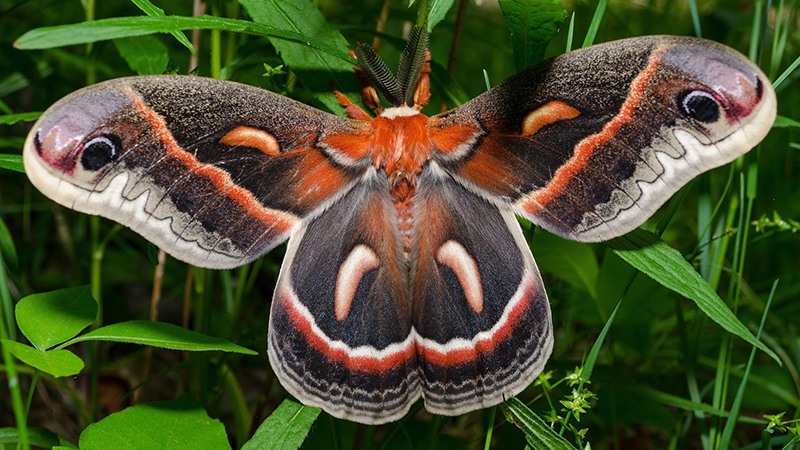Polk County’s Most Wanted — Animal
Published 3:41 pm Monday, December 4, 2017

- Cecropia Moth (Hyalophora cecropia)
In a joint effort to expand the knowledge and understanding of the flora and fauna of Polk County, Conserving Carolina (formerly Pacolet Area Conservancy (PAC) and Carolina Mountain Land Conservancy (CMLC)) and botanist, David Campbell, need your help in locating this month’s “Polk County’s Most Wanted-Animal,” one of the largest silk moth species in North America, the Cecropia Moth (Hyalophora cecropia).
With a wingspan in excess of 5.5 inches, and a coloration consisting of red, white, gray, pink, and black, this species is utterly unmistakable. Preferred habitats include forests, woodland edges, city parks, and backyards. The caterpillar (a spectacular beast in its own right), is several inches long, and light green with prominent prickly tubercles (small rounded projections on the surface) that are red, yellow, and blue. The caterpillar has a wide range of host plants including Sweetgum, Apple, Willow, Cherry, Birch, and Dogwood. Adults are short-lived and do not feed.
Found throughout much of eastern North America, the Cecropia Moth is on the wing between March and July. So why are we writing about it now? Because the next few months are the best time to seek out Cecropia Moth cocoons which are often easier to detect than the adult moth itself. The cocoon is distinctive, several inches in length, light gray color, and usually attached to a twig or branch (not necessarily that of the host plant). Cocoons will often stay attached to an object even after the moth has emerged (or the caterpillar has been the victim of a parasite, which is not uncommon).
The Cecropia Moth is not rare, but its distribution in North Carolina is not as well understood as it could be. We do not know of any current records in Polk County, but it is almost certainly a resident here. So, we are proposing that our readers go on a “Cecropia Moth cocoon scavenger hunt!”
If anyone is fortunate enough to find a Cecropia cocoon, please send us a photograph so that we may document it. Please e-mail photos, comments, or questions to Pam Torlina at Conserving Carolina, 828-859-5060 or pam@conservingcarolina.org.
– written by David Campbell





